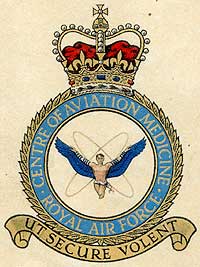History
Future
Due to anticipated closure of RAF Henlow, It is planned to relocate the centre to a new purpose-built facility at RAF Cranwell by 2026. [3]
Function
The RAF Centre of Aviation Medicine is the lead authority in the British Armed Forces for aviation medicine and provides: [3]
- advice, support and services to the Ministry of Defence, British Army, Royal Navy and Royal Air Force, Military Aviation Authority, Air Accidents Investigation Branch, Defence Accident Investigation Branch, academia and commercial organisations
- support in the development of aircraft and other systems, including urgent operational requirements
- the RAF Medical Board and clinical assessment of military aircrew and air traffic controllers
- chemical, biological, radiological and nuclear (CBRN) training for aircrew
- aviation medicine training to the British armed forces and aircrew and medical personnel from other nations
- aviation medicine & aeromedical policy
- occupational health and environmental health support
Training courses
The centre provides training for aircrew from the RAF and other organisations (via International Defence Training or Horizon Training) in subjects such as using night vision goggles [5] and dealing with hypoxia. [6]
It provides training for the on-board Critical Care Air Support Team (CCAST, similar to the Critical Care Air Transport Team of the USAF)
This page is based on this
Wikipedia article Text is available under the
CC BY-SA 4.0 license; additional terms may apply.
Images, videos and audio are available under their respective licenses.
